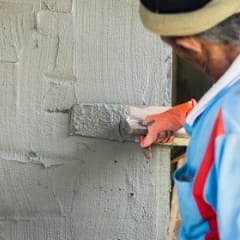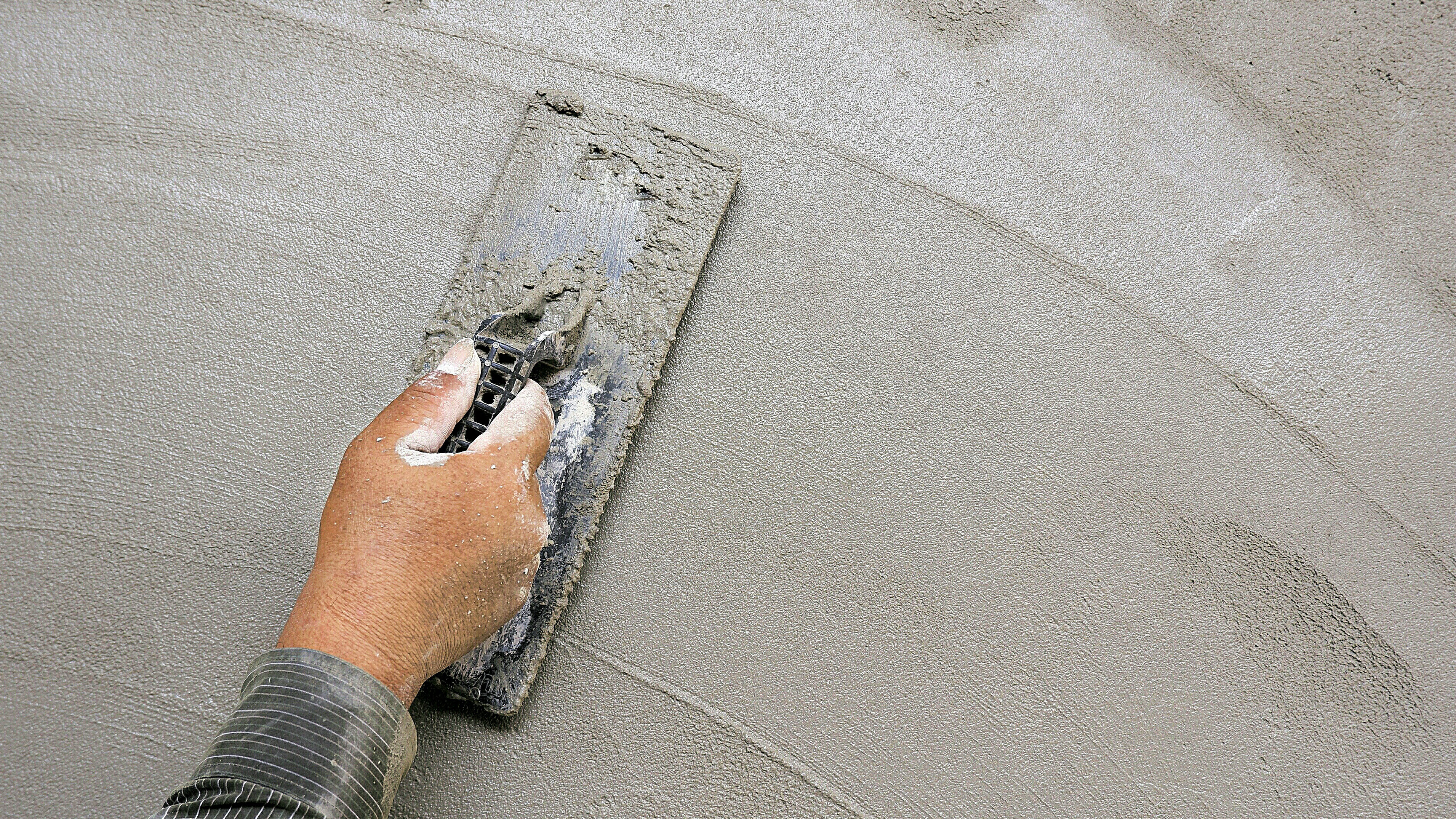The Single Strategy To Use For Plasterer
Wiki Article
Facts About Plasterer Revealed
Table of Contents3 Easy Facts About Plasterer ExplainedThe Plasterer StatementsPlasterer for DummiesHow Plasterer can Save You Time, Stress, and Money.The Best Guide To PlastererUnknown Facts About PlastererPlasterer Fundamentals ExplainedTop Guidelines Of PlastererThe Definitive Guide for PlastererOur Plasterer Ideas
In the U.S.A. the names utilized for gluing or plasterboard are Drywall, Wall Board or Sheetrock. In Australia we commonly describe plasterboard as Gyprock as well as this is a brand name that was begun in in 1947 by CSR.Today, plasterboard is still made by sandwiching a layer of gypsum plaster in between two thick sheets of paper.Building and construction or ornamentation done in plaster or a similar product The devices made use of to plaster walls Plasterwork is building or ornamentation made with plaster, such as a layer of plaster on an interior or external wall surface structure, or plaster decorative moldings on ceilings or walls. This is also often called pargeting. For the art history of three-dimensional plaster, see stucco. The earliest plasters understood to us were lime-based. Around 7500 BC, individuals of 'Ain Ghazal in Jordan utilized lime combined with unheated crushed limestone to make plaster which was used widespread for covering walls, floorings, and also fireplaces in their residences.
In ancient India as well as China, provides in clay and gypsum plasters were made use of to produce a smooth surface over rough rock or mud block walls, while in early Egyptian burial places, wall surfaces were coated with lime as well as gypsum plaster and also the finished surface area was frequently painted or decorated. Modelled stucco was used throughout the Roman Empire.
Get This Report about Plasterer
Oil mastics introduced in the UK in this period included a "Structure or stone paste" patented in 1765 by David Wark. This was a lime-based mix as well as included "oyls of tar, turpentine as well as linseed" besides lots of other active ingredients. Another "Composition or cement", including drying out oil, was patented in 1773 by Rev.This was converted right into English as "A Practical Essay on a Concrete, and Artificial Rock, reasonably supposed to be that of the Greeks and Romans" and was released in the very same year. Following this, and as a reaction to the disappointment felt as a result of the repeated failure of oil mastics, in the second half of the 18th century water-based makes gained popularity as soon as more.
By the mid 19th century manufacturing centres were preparing cast stones based on cement for use in buildings. These were made mainly with a cement mix typically including great as well as coarse accumulations for structure, pigments or dyes to copy colouring as well as veining of natural rocks, as well as various other additives.
3 Easy Facts About Plasterer Explained
Laths were formerly all made by hand. Most are currently made by machinery as well as are known as sawn laths, those made by hand being called rental fee or riven laths. Lease laths give the best results, as they divided in a line with the grain of the timber, and are more powerful and not so reliant turn as machine-made laths, several of the fibers of which are generally cut in the procedure of sawing.By damaging the joints of the lathing this way, the propensity for the plaster to crack along the line of joints is reduced and also a much better trick is obtained. Every lath should be nailed at each end as well as anywhere it crosses a joist or stud. All lumbers over 3 inches (76 mm) wide ought to be counter-lathed, that is, have a fillet or double lath nailed along the centre whereupon the laths are after that toenailed.
Wall surfaces reliant damp are in some cases battened as well as lathed to create an air dental caries in between the damp wall and the plastering. Lathing in metal, either in cable or in the kind of perforated galvanised sheets, is now extensively utilized therefore its fireproof and enduring quality. There are numerous sort of this product in various layouts, the very best known in England being the Jhilmil, the Bostwick, Lathing, and Expanded Metal lathing.
The smart Trick of Plasterer That Nobody is Talking About
Zinc nails are often used, but are costly. Perfect slaking of the calcined lime before being made use of is really vital as, if used in a partially slaked problem, it will certainly "blow" when in placement as well as blister the job (Plasterer). Lime ought to therefore be run as quickly as the building is started, and at the very least three weeks need to expire between the procedure of running the lime and its use.Generally horsehair was the most commonly utilized binder, as it was conveniently offered prior to the development of the motor-car. Hair functions in similar way as the strands in fiberglass material, by regulating and including any kind of tiny cracks within the mortar while it dries or when it undergoes bending. Good hair must be lengthy (In the UK cow and also horse hair of short and also long lengths is utilized), and also left greasey (lanolin grease) due to the fact that this safeguards versus some destruction when introduced into the very high alkaline plaster. Before use it have to be well beaten, or teased, to separate the lumps.
See This Report on Plasterer
The amount utilized in great job is one extra pound of hair to 2 or 3 cubic feet of rugged stuff (in the UK as much as 12 kg per metric cube). Hair support in lime plaster is usual as well as lots of sorts of hair and various other natural fibers can be discovered in historic plasters (Plasterer).Stucco is a term loosely applied to nearly all kinds of exterior plastering, whether composed of lime or of concrete. At today time it has fallen under disfavor, yet in the early component of the 19th century a lot of this work was done. Concrete has mostly superseded lime for this job.
Trowelled stucco, the ending up coat of this job, contains 3 parts sand to 2 parts great things. A really fine smooth surface area is produced using the hand float. Bastard stucco is of comparable structure, yet less labor is used up on it. It is laid on in two coats with a skimming float, combed off simultaneously, and afterwards trowelled.
Getting The Plasterer To Work
The second layer is also composed of rugged stuff knocked up to a smooth as well as uniform consistency. Two coating 2 techniques can be made use of: completely dry dashboard: while the very first coat is still soft, gravel, tile or various other little stones are evenly tossed on with a little scoop and afterwards combed over with slim lime mortar to provide an uniform surface.
A very first coat or rendering of Portland concrete as well as sand, in the proportion of one to three, is laid on regarding an inch thick; after that adheres to the shade coat, occasionally placed on in patches of different colors as required for the completed style. When this coat is virtually completely dry, it is completed with a smooth-skimming, 112 to 18 inch (2.
, and also lath and lay or lath and also plaster one layer on studding. Two-coat job is commonly used for manufacturing facilities or storage facilities and also the less crucial rooms of homes.
Some Known Facts About Plasterer.

The procedure for three layer work is as follows: For the initial layer a layer of well-haired rugged things, concerning 1 inch thick, is placed on with the laying trowel. This is described "puncturing up" in London, and in America "scratch coating". It ought to be laid on diagonally, each trowelful overlapping the previous one.

Plasterer - An Overview
The combing of the floating layer is of excellent value, for it consolidates the product, and also, besides hardening it, stops it from fracturing. It is done by the plasterer with a hand float that he uses vigorously with a fast round informative post activity, at the same time sprinkling the collaborate with water from a stock brush in the various other hand.The entire surface should be consistently searched 2 or 3 times, with a period between each operation of from 6 to twenty-four hrs. This process leaves the plaster with a close-grained as well as rather smooth surface, using little or no trick to the coat that is to adhere to. To acquire proper cohesion, however, a roughened face is needed, and also this is obtained by keying the surface area with a wire brush or nail float, that is, a hand float with the point of a nail sticking via and forecasting around 1/8 inch; in some cases a factor is placed at each corner of the float.
The 3rd and final layer is the setting coat, which need to have to do with 1/8 inch thick. Plasterer. In Scotland it is called the "ending up layer", and also in America the "hard finish layer" or "putty layer". Establishing things should not be applied until the floating is quite strong and also virtually completely dry, however it this hyperlink needs to not be also dry or the wetness will be drawn from the setting things.
See This Report about Plasterer
It must be blended with tidy water to such an uniformity that a quantity selected up on the factor of a trowel holds well together and also does not drop. Drifting stuff is of finer texture than that made use of for puncturing up, as well as is used in a softer state, allowing it to be worked well into the keying of the initial coat.Fine things blended with sand is made use of for the setting layer. Great things, or lime putty, is pure lime that has actually been slaked and after that blended with water to a semi-fluid consistency, and permitted to stand up until it has actually created into a soft paste. For use in establishing it is combined with fine washed sand in the proportion of one to three.
This is commonly evaluated stuff, made up of three or four parts of lime putty and also one part of plaster cast, blended in small amounts quickly before use. The plaster in the product causes it to set swiftly, but if it is present in also huge a proportion the work will certainly crack in setting.
Fascination About Plasterer
In two coat render a skim coat is applied with an usual mix of 4 parts sand to one component concrete and also one part dried lime and also water to make a consistent mortar. Make is applied utilizing a hawk and also trowel and also pressed on concerning 12 mm thick to start.
Report this wiki page